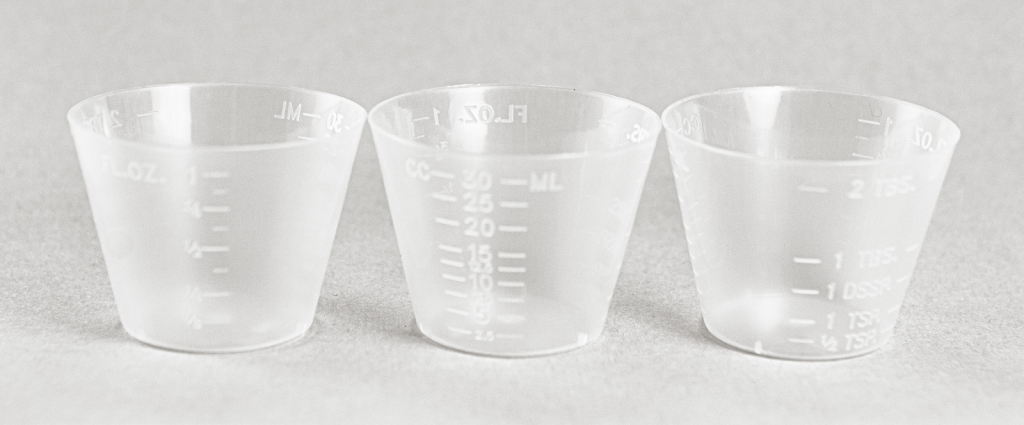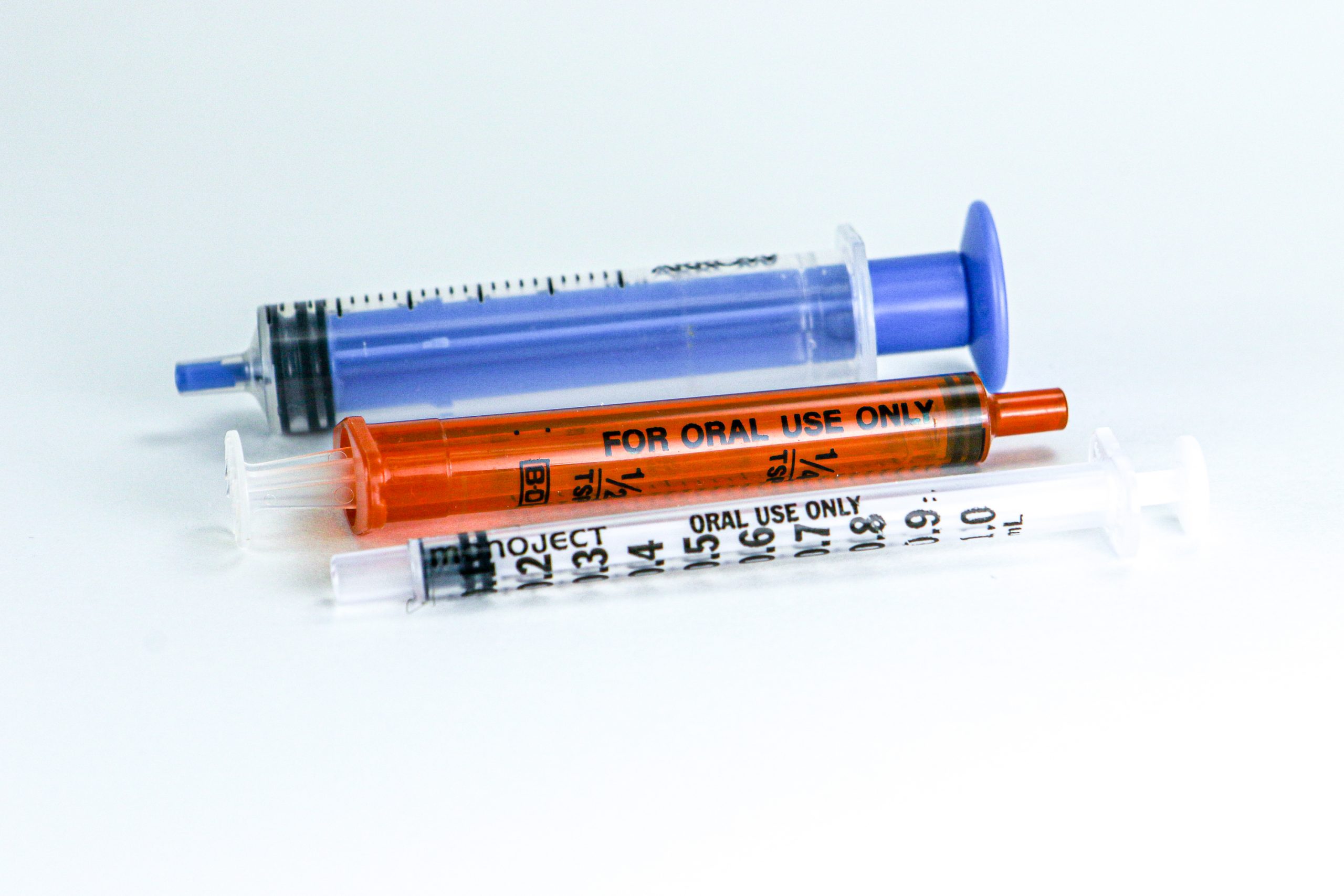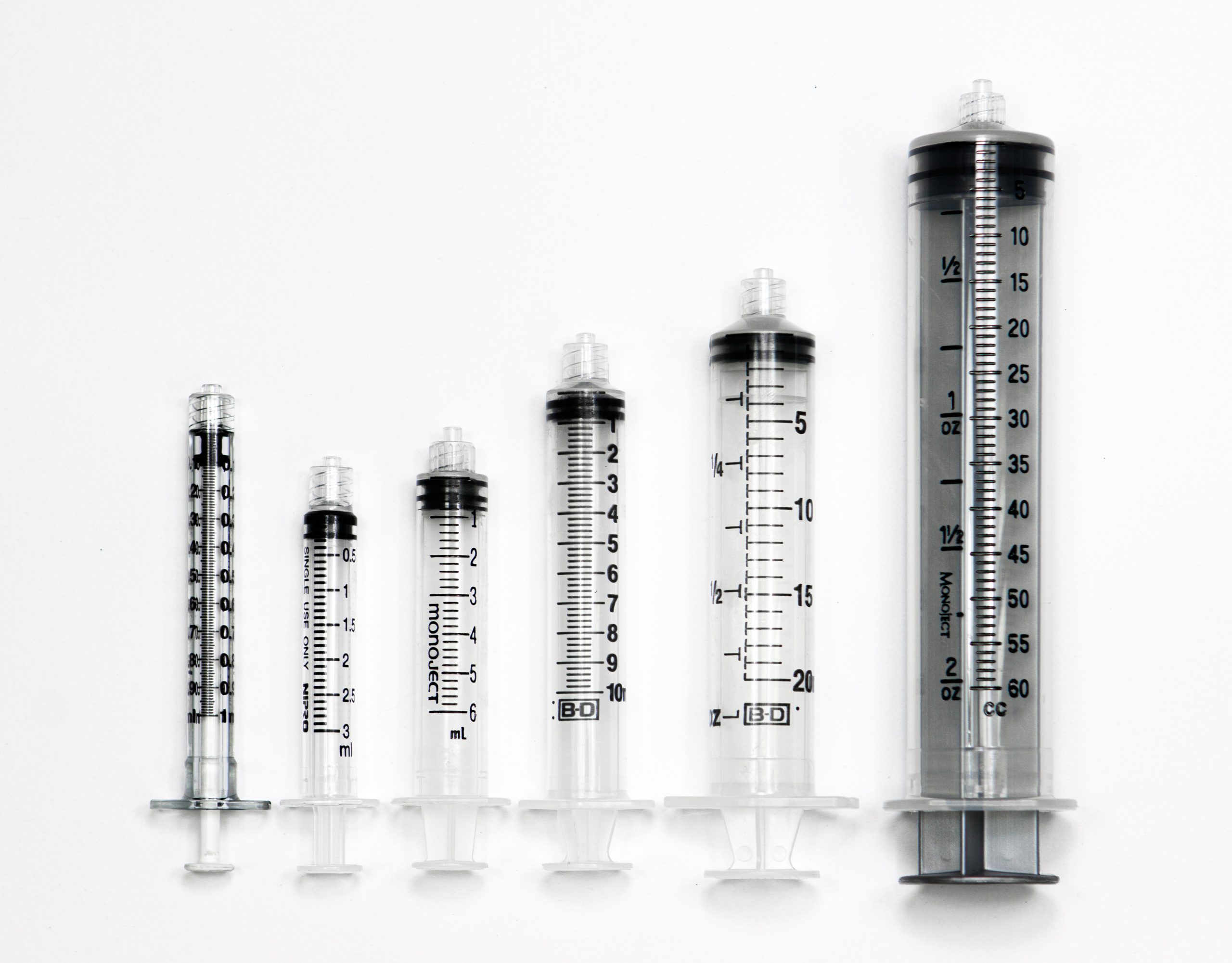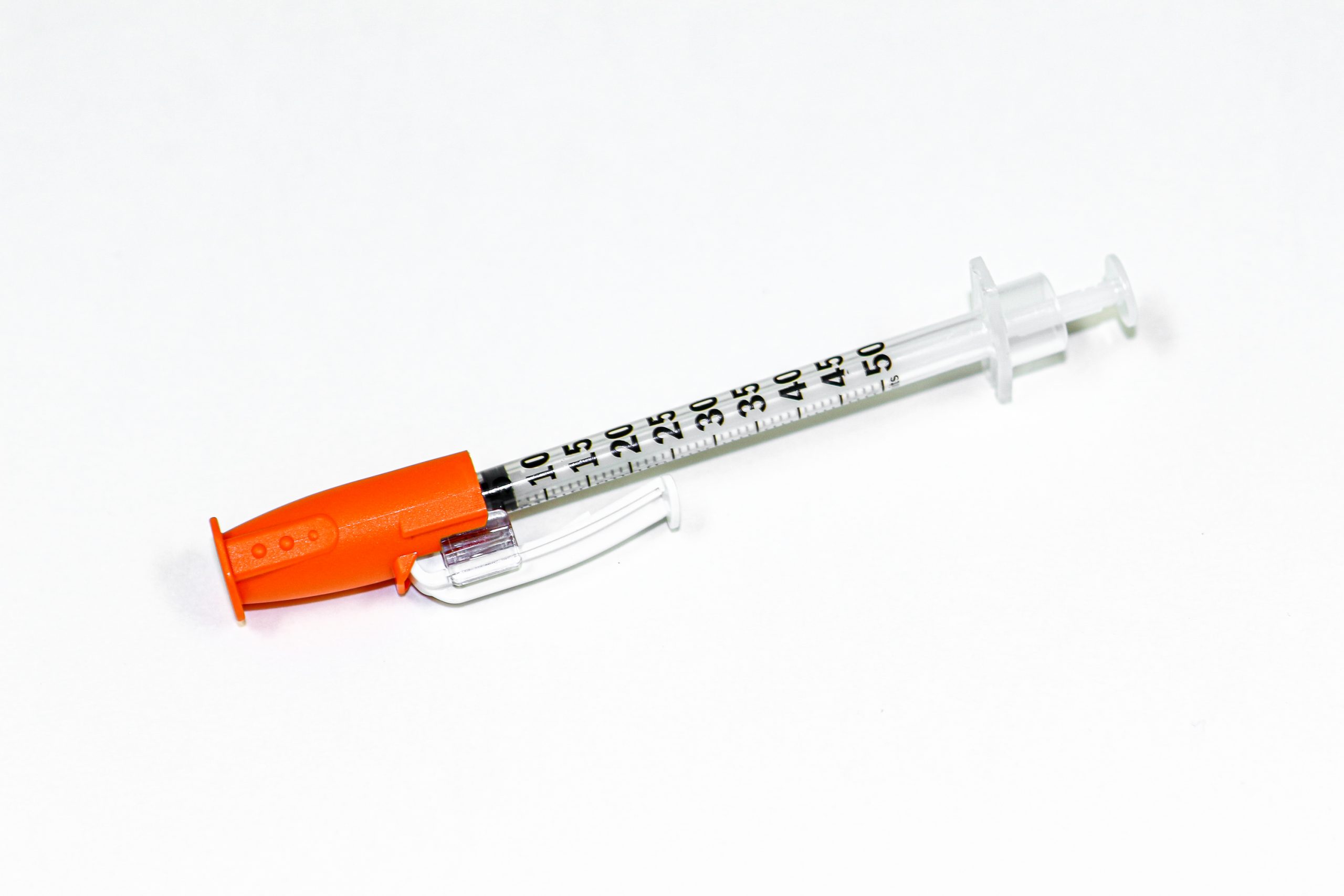5.2 Math Basic Concepts
Ernstmeyer & Christman - Open Resources for Nursing (Open RN)
Measuring Devices
Depending on the type and amount of medication that is being administered, there are several devices used for measuring and administering medications.
A medication cup that is composed of plastic or paper is used to hold and dispense oral medications to a patient. A paper cup is used to administer nonliquid medications, such as tablets or capsules. A plastic medication cup is used to dispense both liquid and nonliquid medications, and calibrated cups are also used to measure liquid medications prior to administration. Calibrated medication cups have labelled measurements such as ounces (oz), cubic centimeters (cc), milliliters (mL), teaspoons (tsp), and tablespoons (Tbs). See Figure 5.1[1] for an image of a calibrated medication cup.

Oral syringes are used to administer liquid medications via the oral route, especially to children, because they allow for precise measurement of small doses. See Figure 5.2[2] for an image of an oral syringe. Oral syringes have different tips than syringes used for injections.

Syringes are used when administering medications through the parenteral route (i.e., intradermally, subcutaneously, intramuscularly, or intravenously). There are also syringes specifically developed for oral medication administration. Oral medication syringes are commonly orange in color and have a tip that will not allow the oral syringe to be connected to an intravenous injection port. Syringes used for injections are available in many sizes and are selected by the nurse based on the type of injection and the type of medication administered. Both Luer lock and slip tip syringes are commonly available for parenteral use. Luer lock syringes have a threaded syringe tip that allow the syringes to be screwed into an injection port. Slip tip syringes do not have a locking mechanism or screw-on connection. Slip tip syringes can be easily attached and removed from different injection devices. Many slip tip syringes are found in Foley catheter insertion kits. Common syringe sizes range from 1 mL to 60 mL. See Figure 5.3[3] for an image comparing various sizes of syringes. Syringes are calibrated based on the volume they hold. For example, a 1-mL syringe is calibrated in hundredths, and a 3-mL syringe is calibrated in tenths. Syringes that hold larger volumes, such as 5-, 10-, and 12-mL syringes, are usually calibrated in fifths (two tenths). Large syringes, such as 60-mL syringes, are calibrated in whole numbers.

Special syringes are used to administer insulin and are calibrated in units. See Figure 5.4[4] for an image of an insulin syringe. Insulin syringes are easily identified by a standard orange cap.

Media Attributions
- medication cups
- “Medication Cups” by Deanna Hoyord, Chippewa Valley Technical College is licensed under CC BY 4.0 ↵
- “Oral Syringes 3I3A0820.jpg” by Deanna Hoyord, Chippewa Valley Technical College is licensed under CC BY 4.0 ↵
- “Syringes 3I3A0446.jpg” by Deanna Hoyord, Chippewa Valley Technical College is licensed under CC BY 4.0 ↵
- “Insulin Syringe 3I3A0783.jpg” by Deanna Hoyord, Chippewa Valley Technical College is licensed under CC BY 4.0 ↵
Sample Documentation of Expected Findings
Initiated IV infusion of normal saline at 125 mL/hr using existing 22-gauge IV catheter located in the right hand. The IV site is free from pain, coolness, redness, or swelling.
Sample Documentation of Unexpected Findings
Attempted to initiate IV infusion in right hand with existing 22-gauge IV catheter. IV site free from pain, redness, or signs of infiltration. IV site flushed readily with normal saline. Normal saline IV fluids connected at 200 mL/hour with immediate leaking around infusion site. Swelling noted superior to infusion site. Fluids stopped immediately.
Use the checklist below to review the steps for completion of “Primary IV Solution Administration.” Review the steps to safely administer all types of medication in the "Checklist for Oral Medication Administration" in the "Administration of Enteral Medications" chapter.
View an instructor demonstration of Primary IV Solution Administration[1]:
Steps
Disclaimer: Always review and follow agency policy regarding this specific skill.
- Gather supplies: IV fluid, primary tubing, tubing change label, and alcohol pads/scrub hubs.
- Verify the provider order with the medication administration record (eMAR/MAR).
- Perform the first check of the six rights of medication administration while withdrawing the IV fluids from the medication dispensing unit. Check expiration date and verify patient allergies.
- Remove the IV solution from the packaging and gently apply pressure to the bag while inspecting for tears or leaks.
- Check the color and clarity of the solution.
- Perform the second check of the six rights of medication administration.
- Perform safety steps:
- Perform hand hygiene.
- Check the room for transmission-based precautions.
- Introduce yourself, your role, the purpose of your visit, and an estimate of the time it will take.
- Confirm patient ID using two patient identifiers (e.g., name and date of birth).
- Explain the process to the patient and ask if they have any questions.
- Be organized and systematic.
- Use appropriate listening and questioning skills.
- Listen and attend to patient cues.
- Ensure the patient’s privacy and dignity.
- Assess ABCs (airway, breathing, and circulation).
- Perform the third check of the rights of medication administration at the patient's bedside.
- Remove the primary IV tubing from the packaging. If administering IV fluid by gravity, note the drip factor on the package and calculate drops/min. Perform the necessary calculations for the infusion rate.
- Move the roller clamp so that it is halfway up the tubing and clamp it.
- Remove the cover from the tubing port on the bag of IV fluid.
- Remove the cap from the insertion spike on the tubing. While maintaining sterility, insert the spike into the tubing port of the bag of IV fluid.
- Squeeze the drip chamber two or three times to fill the chamber halfway.
- Loosen the cap from the end of the IV tubing and open the clamp to prime the tubing over the sink:
- If using multiple port tubing, invert the ports to prime them and to prevent air accumulation in line.
- If the solution is an antibiotic, take care to not waste solution while priming the tubing to ensure the patient receives the correct dosage.
- Once primed, clamp the IV tubing and check the entire length of the tubing for air bubbles. Tap the tubing gently to remove any air.
- Replace or tighten the cap on the end of the tubing.
- Label the primary IV fluid bag with the date and time. Place the tubing label on the tubing near the drip chamber.
- Assess the patient’s venipuncture site for signs and symptoms of vein irritation or infiltration. Do not proceed with administering fluids at this site if there are any concerns.
- Based on agency policy, vigorously cleanse the catheter cap on the patient's IV port with an alcohol pad/scrub hub (or the agency required cleansing agent) for at least fifteen seconds and allow it to dry.[2]
- Assess IV site patency according to agency policy. Purge a prefilled normal saline syringe of air. Attach the syringe onto the saline lock cap. Undo the clamp on the extension tubing. Inject 3 to 5 mL of normal saline using a turbulent stop-start technique. If resistance is felt, do not force the flush and do not proceed with IV solution administration; follow up according to agency policy.
- Remove the syringe from the IV cap and then clamp the extension tubing.
- Vigorously cleanse the catheter cap on the patient's IV port with an alcohol pad/scrub hub (or the agency required cleansing agent) for at least five seconds and allow it to dry.
- Remove the protective cap from the end of the primary tubing and attach it to the IV port while maintaining sterility.
- Move the slide clamp on the saline lock to open the tubing.
- Set the infusion rate based on the provider order:
- For infusion pump: Set volume to be infused and rate (mL/hr) to be administered.
- For gravity: Calculate drop per minute.
- Assess the patient’s IV site for signs and symptoms of vein irritation or infiltration after infusion begins.
- Secure the tubing to the patient’s arm.
- Assist the patient to a comfortable position, ask if they have any questions, and thank them for their time.
- Ensure safety measures when leaving the room:
- CALL LIGHT: Within reach
- BED: Low and locked (in lowest position and brakes on)
- SIDE RAILS: Secured
- TABLE: Within reach
- ROOM: Risk-free for falls (scan room and clear any obstacles)
- Perform hand hygiene.
- Document the procedure and related assessment findings. Report any concerns according to agency policy. Include IV fluids on patient's input/output documentation.
Sample Documentation of Expected Findings
Initiated IV infusion of normal saline at 125 mL/hr using existing 22-gauge IV catheter located in the right hand. The IV site is free from pain, coolness, redness, or swelling.
Sample Documentation of Unexpected Findings
Attempted to initiate IV infusion in right hand with existing 22-gauge IV catheter. IV site free from pain, redness, or signs of infiltration. IV site flushed readily with normal saline. Normal saline IV fluids connected at 200 mL/hour with immediate leaking around infusion site. Swelling noted superior to infusion site. Fluids stopped immediately.

